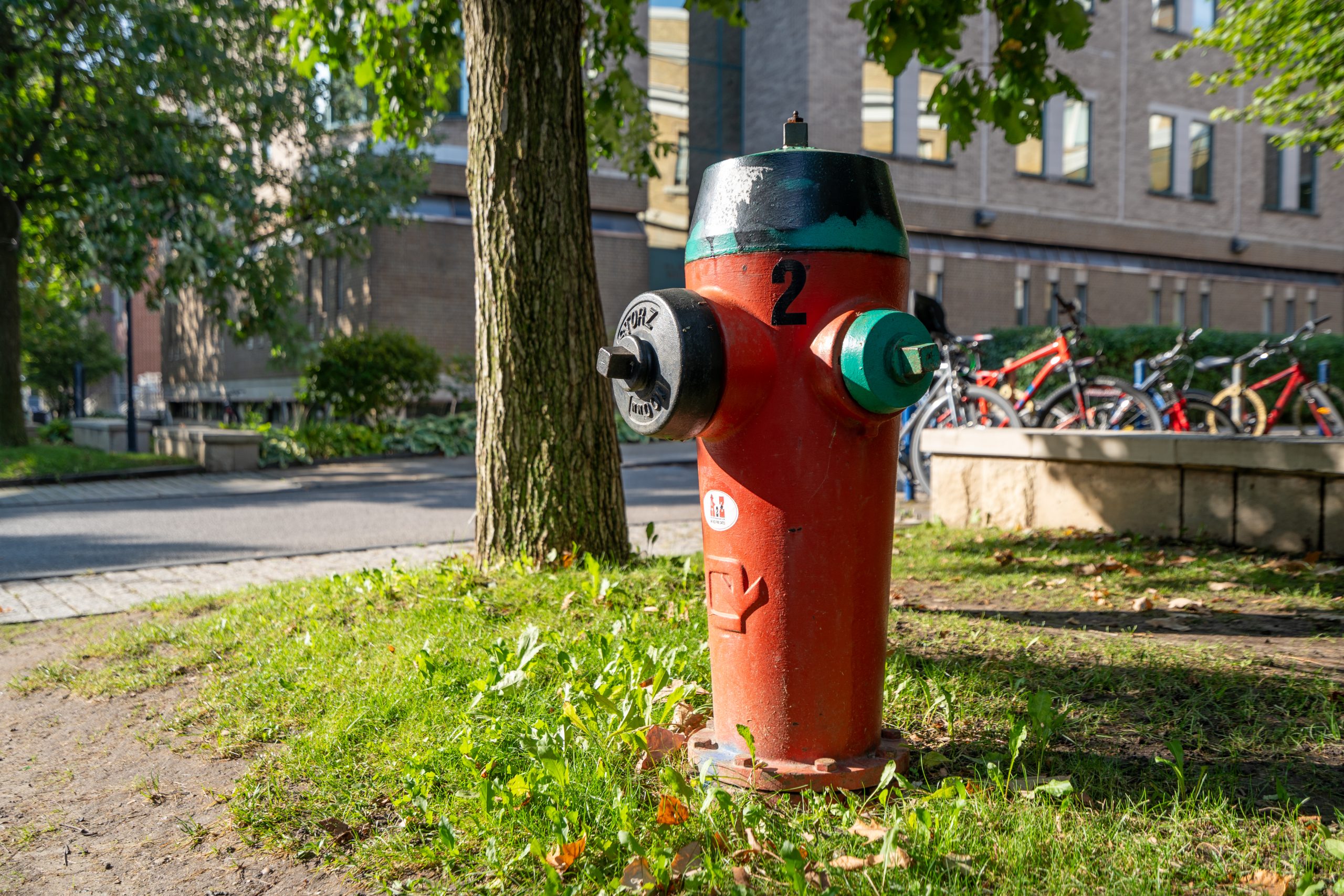Fire hydrants: four fun facts
Like many essential mechanisms in our lives, fire hydrants are at once ubiquitous and mysterious. As part of our ongoing exploration of all things fire safety, we’re here to demystify the humble hydrant.
Here’s the down low on the flow.

1. Colour-coding counts
Did you ever notice that some fire hydrants on campus are different colours? What’s the difference?
Fire hydrants owned and maintained by the city of Toronto are yellow and those under F&S’s maintenance purview are red.
You may further notice that the caps on top of the hydrants are blue, green, orange or red. These colours indicate the individual hydrant’s pressure level. In an emergency, these coloured caps allow fire fighters to quickly assess the pressure levels required to send water up to the required height.
Check out the testing in action on our Instagram.
2. The Canadian hydrant experience
In the movies, when a fire hydrant opens it does so with an explosive burst of water.
How come our hydrants above the border don’t do that? That’s because Canadian hydrants are pressurized to keep the water below the frost line—six feet down—to prevent freezing within the pipes.
A three-valve system ensures the water stays low, and maintenance is required to monitor for any potential seepage into the ground at that level.
3. The life of a hydrant
There are over twenty fire hydrants privately owned by U of T on campus that are maintained by F&S. The working lives of these hydrants—typically around 50 years—are significantly extended by regular maintenance and inspections of the valves, pipes and pressure to anywhere between 80 and 100 years.
4. Flow testing
Twice annually, F&S organizes flow-testing procedures to verify the working order of our fire hydrants.
A certified third-party contractor opens the valves and lets the water flow, measuring pressure levels and inspecting the hydrants for rust, blockages or other issues that would prevent this potentially life-saving service from operation. The whole process takes up to two days, with each individual hydrant’s testing taking between 15 and 20 minutes to complete.
Check out the testing in action on our Instagram.
To learn more about the work F&S does to regularly test its fire protection systems, explore our page detailing sprinkler system, backflow preventer, fire pump and fire hydrant testing. You can also keep up-to-date on all planned and unplanned services by signing up for service alerts.
